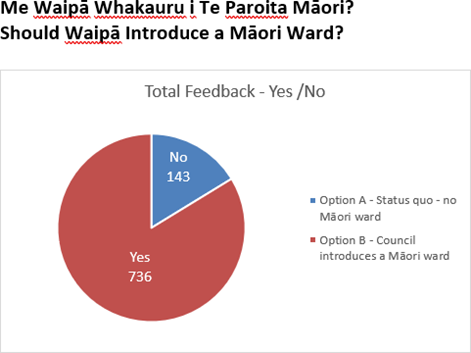A remarkable turnaround in public opinion – and strong submissions from iwi – put councils wanting to introduce Māori wards on the front foot.
Last week was the final week councils up and down the country could vote in favour of a Māori ward switch in time for next year’s local body elections.
In 2014 83 per cent of New Plymouth District Council residents rejected the notion in a referendum and the city’s then mayor Andrew Judd chose to stand down at the next election.
But in 2021 – and on the back of extensive media coverage in the News, 84 percent of Waipā residents backed Māori wards in submissions made during consultation processes. A similar process in Hamilton suggests the swing has spread – 81 per cent of Hamilton residents backed them.
And in New Plymouth, where the key to Māori wards was unlocked in February by Local Government Minister Nanaia Mahuta, who announced councils could make a binding decision – it emerged efforts to secure 5000 signatures to force a second referendum to stop their introduction were failing.
Waikato District and Hamilton City councils are among those who will decide this week whether or not to add Māori wards.

Matamata-Piako and Ōtorohanga districts have already done so in recent weeks.
Others to make to move have included Wellington City, Rangitikei District, Nelson City, Far North District, Tauranga City, Whangarei District, Palmerston North and the Taranaki Regional Council.
But there has been anger – and marches – after Manawatu District and Napier City said no. Tasman and Stratford District have also refused.
Manawatu’s deputy mayor said the community wasn’t ready for Māori wards – Napier’s mayor Kirsten Wise says Waitangi Treaty obligations do not apply to her council.
The consultation period in Waipā attracted 879 pieces of feedback – and 736 people supported adding a Māori wards.
Of 474 individual pieces of feedback within Waipā 345, 73 percent, supported Māori Wards. Submissions from outside Waipā were also overwhelmingly in support. At the time New Plymouth sought to create a Maori ward in 2014, the district’s daily newspaper, the Taranaki Daily News, received regular letters to the editor from outside the region opposing the plan.
Andrew Judd, given the Waipā figures on Tuesday, told the News it was exciting news. He had optimistically predicted a 50-50 split.
“Māoridom has woken – and we have to do better as treaty partners,” he said.
The Waipā responses came on the back of a promotion of the consultation process by the Waipā District Council and, according to a report presented at yesterday’s historic Māori ward meeting in Te Awamutu, media coverage from March 16 to April 14 of eight stories in the Te Awamutu and Cambridge News, with a combined audience reach of almost 24,500, and five items in two community pitched publications owned by Stuff and NZME.
A week before the consultation process was announced, one of those publications announced correspondence on the issue of Māori wards had closed.
The Te Awamutu and Cambridge News ran another nine stories on the issue outside of the March 16-April dates.
Meanwhile, Waipā District Council chief executive Garry Dyet has rejected complaints from two regular News letter writers who suggested councillors had predetermined views on the issue.
“While Councillors may have previously expressed a preliminary view on this issue, which they are entitled to do so, we are confident that they have kept an open mind on this issue up to the point of making a decision on this matter later this week,” he told the News on Monday.
Hayden Woods and Bernard Westerbaan suggested Mayor Jim Mylchreest and four councillors should have been banned from voting on the issue.









